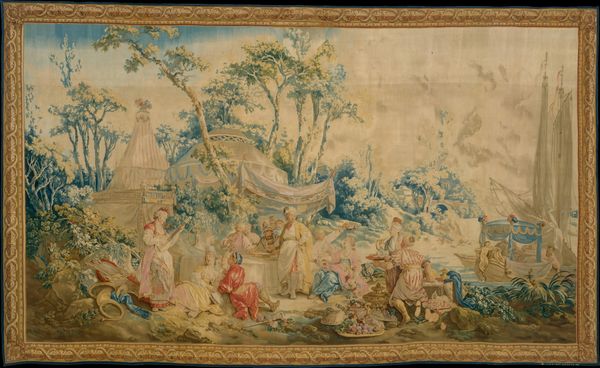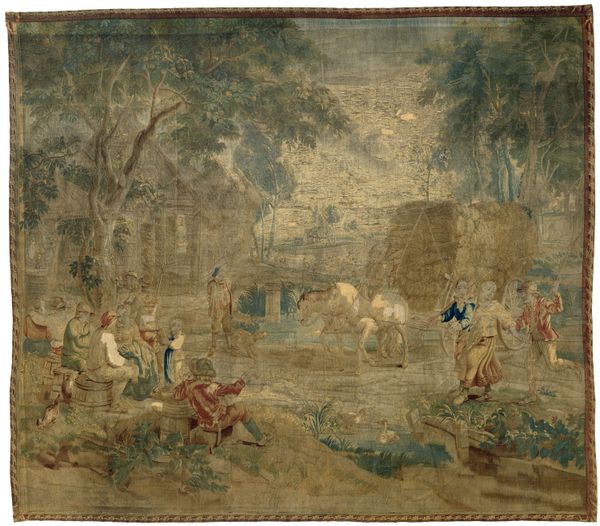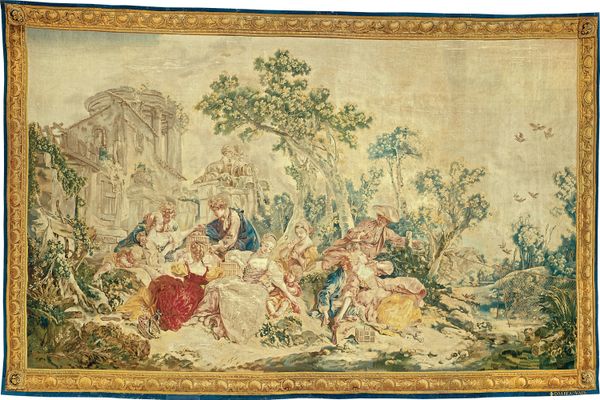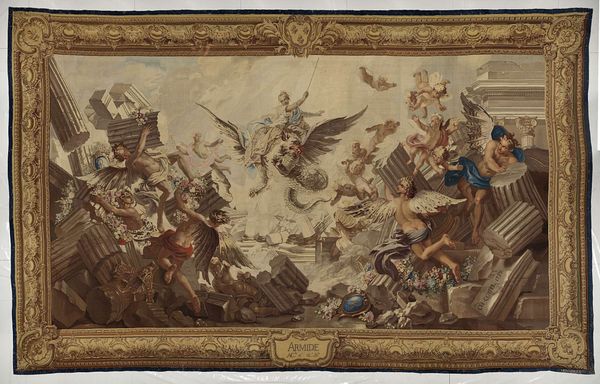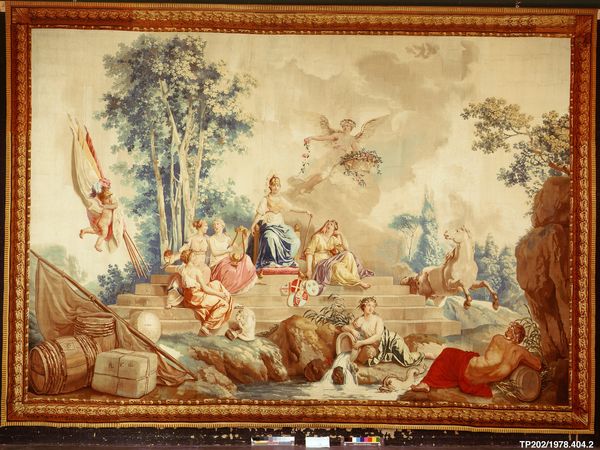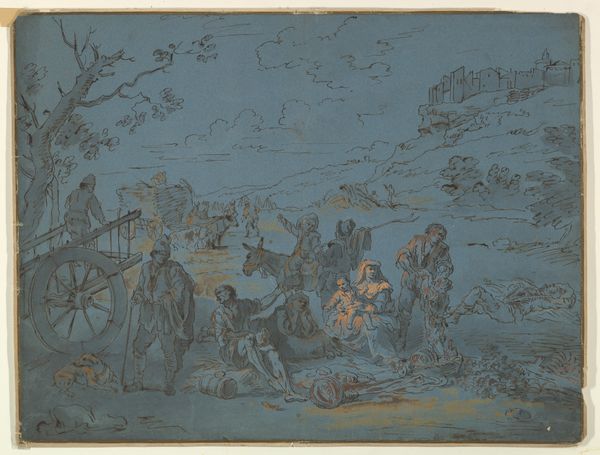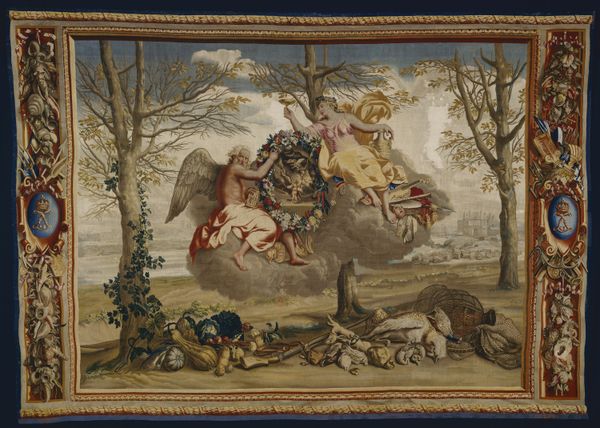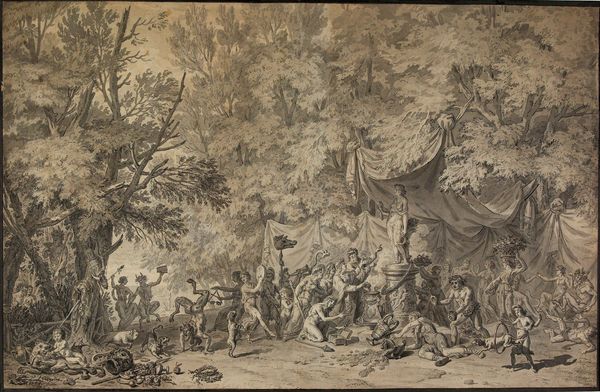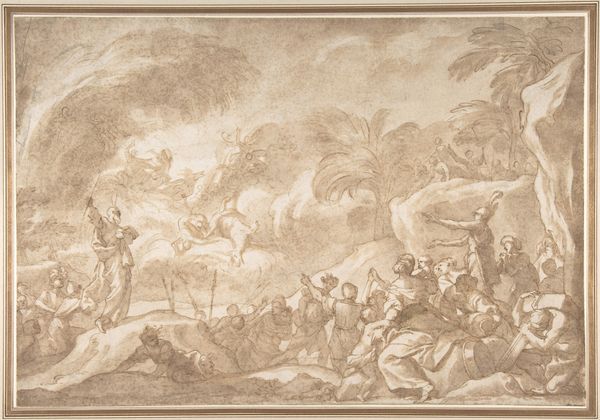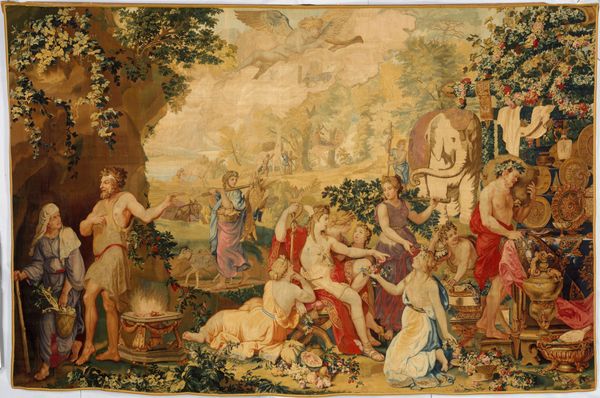
Africa from a set of The Four Continents 1781 - 1791
0:00
0:00
Dimensions: 12 × 15 ft. (365.8 × 457.2 cm)
Copyright: Public Domain
Curator: What immediately strikes me about this piece, this tapestry actually, is the rather turbulent scene. There’s a sense of classical drama unfolding amidst somewhat exotic imagery. Editor: Indeed. This piece, entitled "Africa" from a set of "The Four Continents," was created between 1781 and 1791 by Jean Jacques François Le Barbier. It’s currently held here at The Metropolitan Museum of Art. Given the socio-political context, it’s intriguing to view how Africa, the continent, is being symbolically represented. Curator: Symbolically represented is perhaps an understatement. Look at the bestiary! A zebra-lion hybrid pulls the chariot of seemingly noble figures of color. Then the rather obvious cornucopia signifying bounty and abundance. It almost feels performative in its exoticism. Editor: Precisely! The composition certainly exoticizes Africa, aligning it with stereotypical notions of the time. There's the potential wealth juxtaposed with the chaos unfolding to the right—warrior figures seemingly attacking angelic ones. It creates this image of conflict. Curator: This sense of conflict isn't just visual noise, it reinforces European notions of Africa as a land of contrasts—untamed nature alongside noble savagery. But tell me more about these warrior-like figures; are they directly linked to how Africans were perceived, visually and psychologically? Editor: I believe so. There's an obvious hierarchical display at play. The lighter-skinned woman being offered gifts or tribute and these men, noble but certainly posed as submissive, as almost serving roles, does suggest power dynamics imposed during the late 18th-century colonial expansions. This artwork performs those biases on textile! Curator: And yet, to simply write it off as entirely negative is complicated, isn’t it? Le Barbier created something that is very indicative of European expansion, of colonialism but that is still here on the wall of a major museum hundreds of years later for reflection. Editor: It makes you wonder about our modern iconography, doesn't it? I mean, this artwork invites crucial reflections on the history of cultural bias, imperial ambitions, and how symbols subtly continue those themes. Curator: Absolutely. Art becomes a powerful stage to engage with, reflect and question what has happened, is happening and how we want it to all be viewed in the future.
Comments
No comments
Be the first to comment and join the conversation on the ultimate creative platform.
